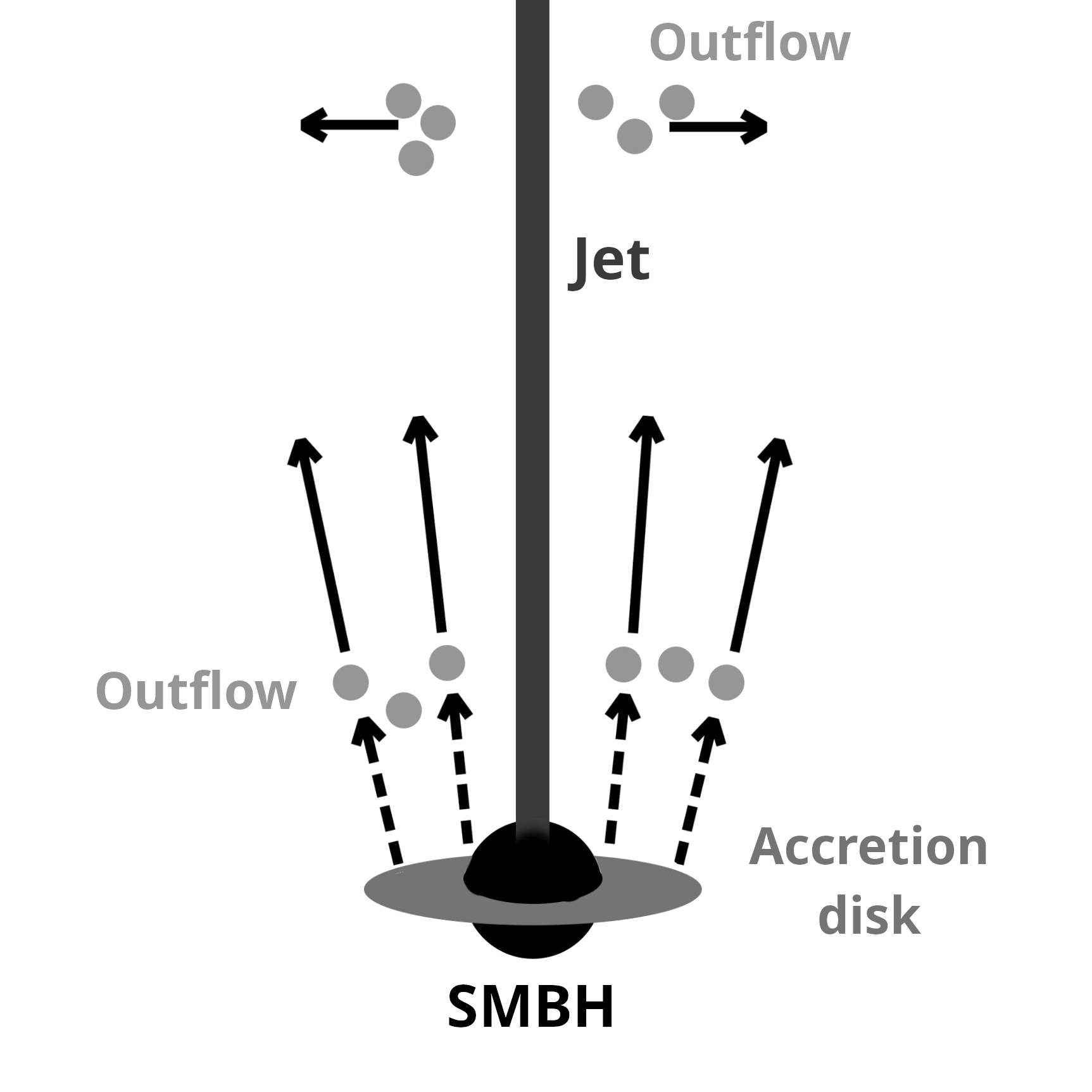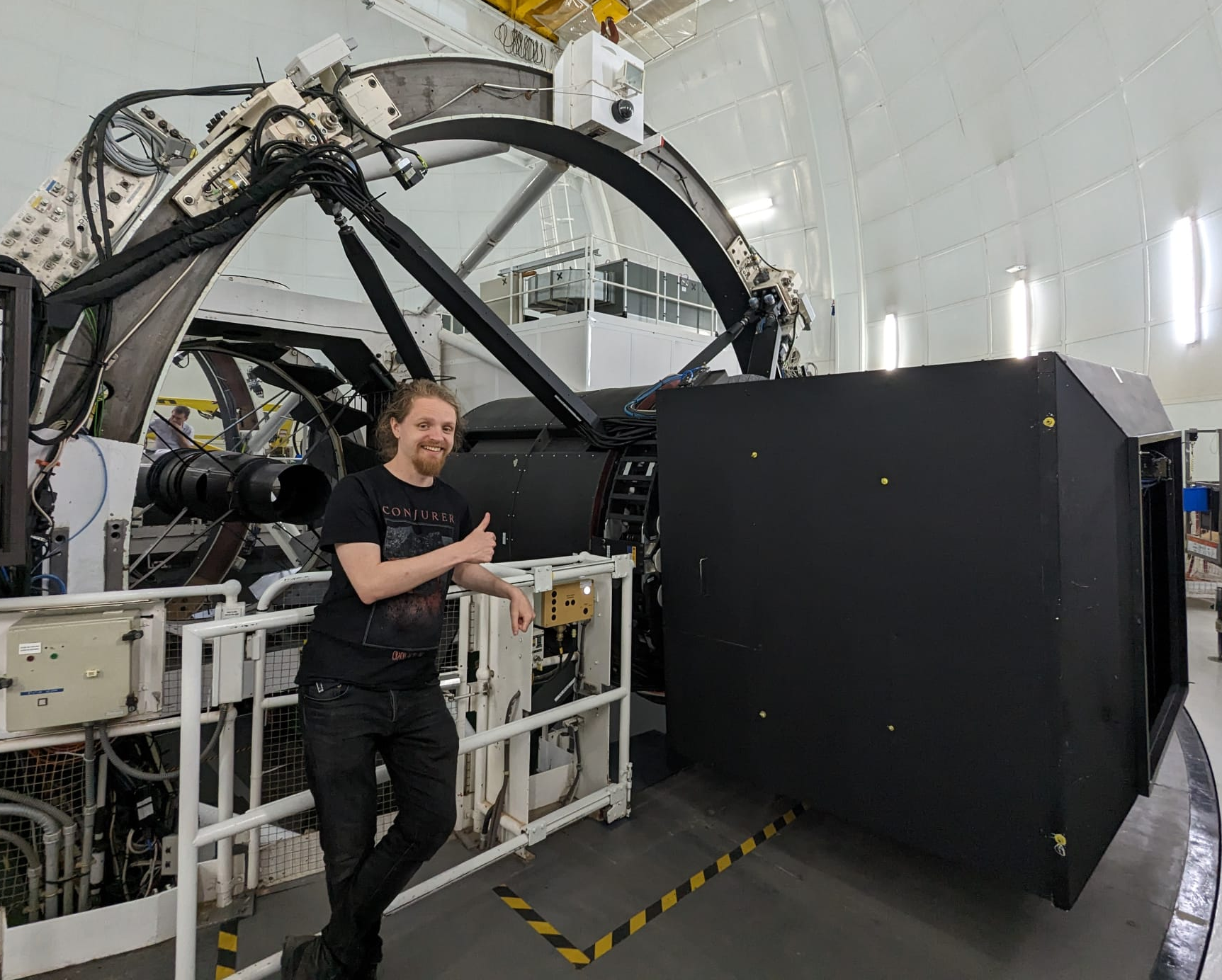AGN-driven outflows
My primary scientific interest is gas outflows accelerated by accreting supermassive black holes (SMBHs) in the centres of galaxies (known as active galactic nuclei, or AGN) and their impact on their host galaxies. Despite being commonly considered to play a crucial role in how galaxies evolve, deriving their key properties from observational data is difficult, and involves significant uncertainties. Therefore, a large focus of my work is to develop and use precise diagnostics of outflow properties in order to determine their true importance in galaxy evolution.
To this end, I use a multi-wavelength observational approach to robustly determine key outflow properties. This includes optical and near-infrared longslit, integral-field and multi-object spectroscopy, in addition to radio and sub-millimetre interferometry. In my PhD, I performed detailed studies that applied precise techniques to such data for four nearby active galaxies - my thesis can be accessed here, and the four corresponding papers that I produced during my PhD are listed on my publications page.

The WEAVE-LOFAR survey
I am a member of the Survey Working Group (SWG) for the WEAVE-LOFAR survey, which is due to start in 2025. In addition to performing scientific analysis with data produced by the survey, I am actively involved in determing the survey strategy, planning observations, and writing key software needed to analyse the data.

Other interests
As well as my work on AGN and WEAVE-LOFAR, I have previously investigated the evolution of light pollution at the Roque de Los Muchachos observatory, as well as the variation of atmospheric seeing there. Presentation slides for seminars that I have given regarding this work can be found on my publications page.